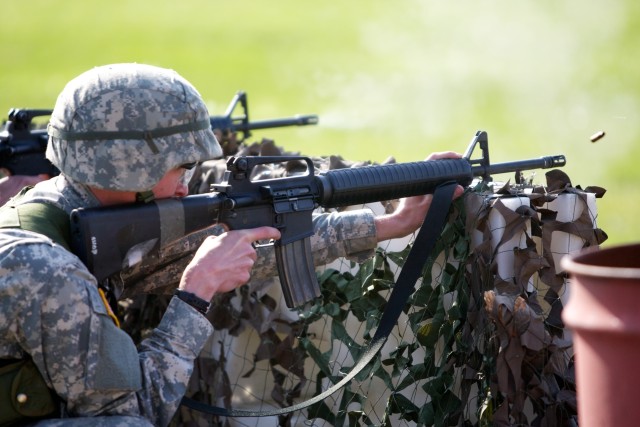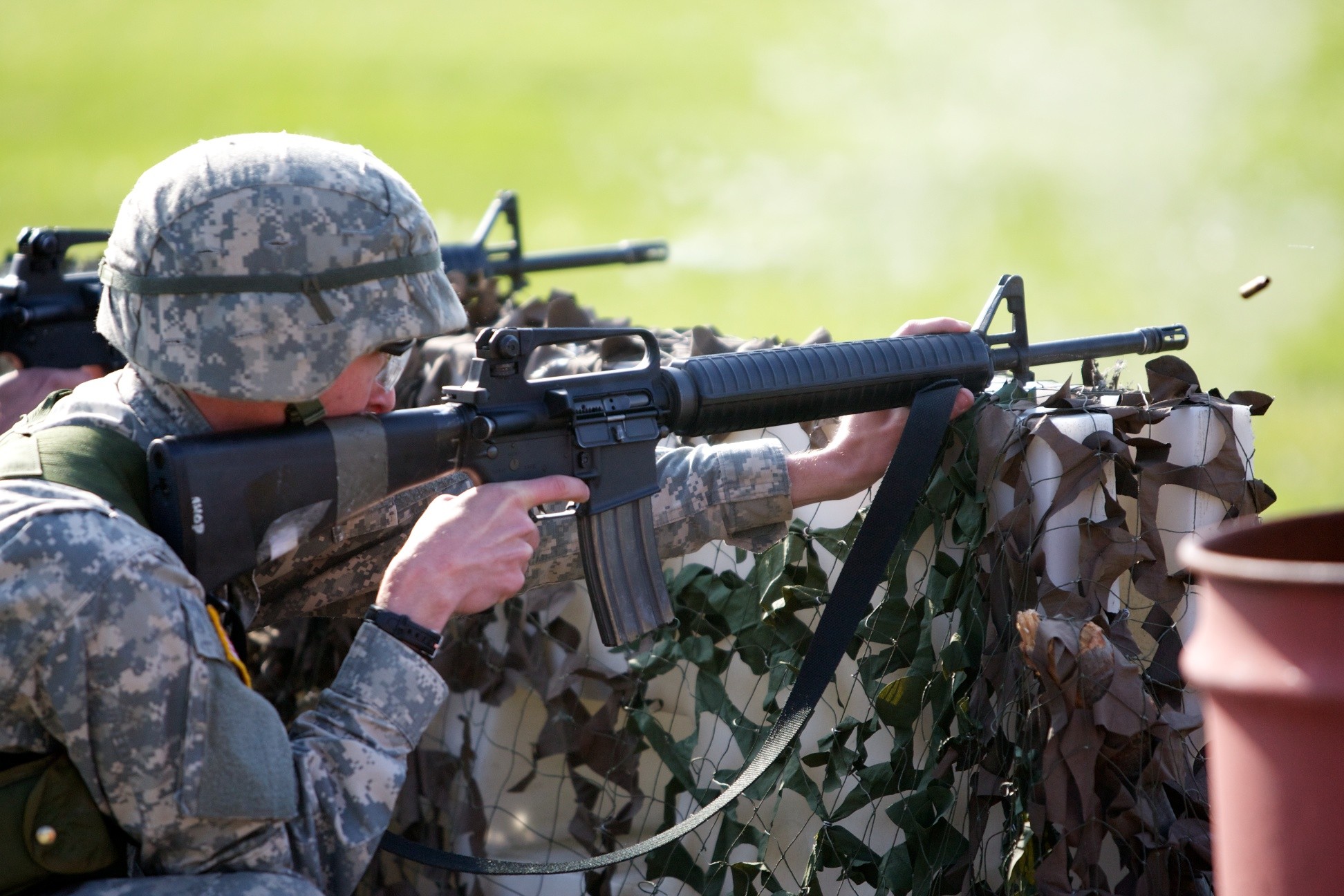WEST POINT, N.Y. - History might be against ROTC. No Cadet Command team has ever won the famed Sandhurst Military Skills Competition. But Cadets pitting their tactical and physical abilities against some of the world's top squads of prospective officers hope to rewrite history this weekend.
"There's nothing saying they're better than us," Stanley Kareta, a senior and captain of Norwich University's team, said of the British Cadets who traditionally dominate the competition. "We've been training all year, and I'm not worried about them. They're just another team. We're all on the same playing field in my eyes."
The annual two-day event aimed to test competitors' mettle through a variety of challenges got under way Friday near the United States Military Academy, with teams from each of Cadet Command's eight brigades looking to make their mark.
A total of 50 teams make up this year's field, most of which consist of academy Cadets. The competition's worldwide flavor, in addition to the Brits, includes groups from Spain, Chile, Afghanistan, Australia and Taiwan. All teams consist of nine members, one of which is a female.
The competition began in 1967 with the presentation of a sword by the Royal Military Academy in Sandhurst, England, to West Point to use as the prize in a competition that promotes military excellence. The Sandhurst competition is an intense event that challenges participants to work together and use their ingenuity, leadership and physical drive to overcome obstacles involving land navigation, first aid, combat fitness and decision-making.
Most Cadet Command teams have been in West Point since Monday, working to familiarize Cadets with the terrain and to practice in the unfamiliar surroundings.
Friday's opening day focused on marksmanship. But the event was unlike a range most Cadets had experienced, where they focus on individual performance and have plenty of time to engage targets.
Not this day.
Just prior to taking the range, teams assembled in a valley away from the site. A scenario was laid out for them there, outlining their mission and what they would encounter: An enemy had interspersed itself among civilians across a large, mostly open area. Targets clad in white represented civilians; those in green were adversaries.
The teams' goal was to protect the friendlies and take out as much of the opposition as possible - and do it in less than 10 minutes.
Cadets were driven up a hill to the range, riding in the back of a cloth-covered truck. They piled out and hurried together along a gravel trail, taking cover behind a 90-foot long barrier of debris that looked more like a load of material that had washed up in a flood.
Cadets wiggled themselves around the items. Some used the mound of cinder blocks to rest their hands, which held the stock of their rifle. Some lay prone, aiming their muzzles through openings in the bare tree limbs or slats in the upright wooden pallets. Others sprawled across a canted portion of shingled roofing, peeking over the object for their targets.
Hitting those targets - and the right ones at that - was key. Communication was a must.
Teams fanned out along the barrier, dividing the expansive range into sections. Each Cadet had a specific area to scan. As targets popped up, team members would call out to each other where they were and whether they were friend or foe.
"We were expecting to be given more of a curveball," said Clinton May, captain for the University of North Dakota.
On the brief ride to the range, May looked around the truck saw no signs of nervousness on the faces of his teammates.
"We were calm," he said. "It was kind of surprising."
May didn't focus on the scenario, but rather on ensuring each Cadet communicated loudly and understood the importance of safety while on the range. They huddled to recite their motivational motto just before they disembarked.
"I thought we did well," May said after the shoot. "I couldn't have asked them to do better."
Results were not immediately available.
The scenario caught some teams off guard. But they saw it as beneficial, giving them exposure to a situation they might actually encounter in a combat zone once they commission.
"It was tough," said Ryan Rivas, assistant captain for Florida State University. "It was like real life."
Nick Meginnis, FSU's captain, called the range one of the most challenging he'd been on.
"You didn't know what to expect," he said. "There was that fear of the unknown."
The bulk of the competition is set for Saturday. Teams begin tackling an extensive course of challenges at 6:30 a.m., encountering everything from an obstacle course to a boat race to stream-crossing.
Army ROTC Cadets are eying the next leg with anticipation.
"For it to finally be here, we're ready," May said. "The adrenaline is pumping now."


Social Sharing